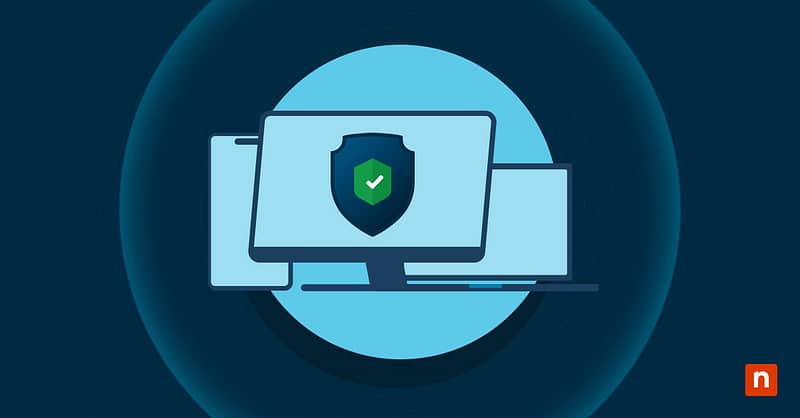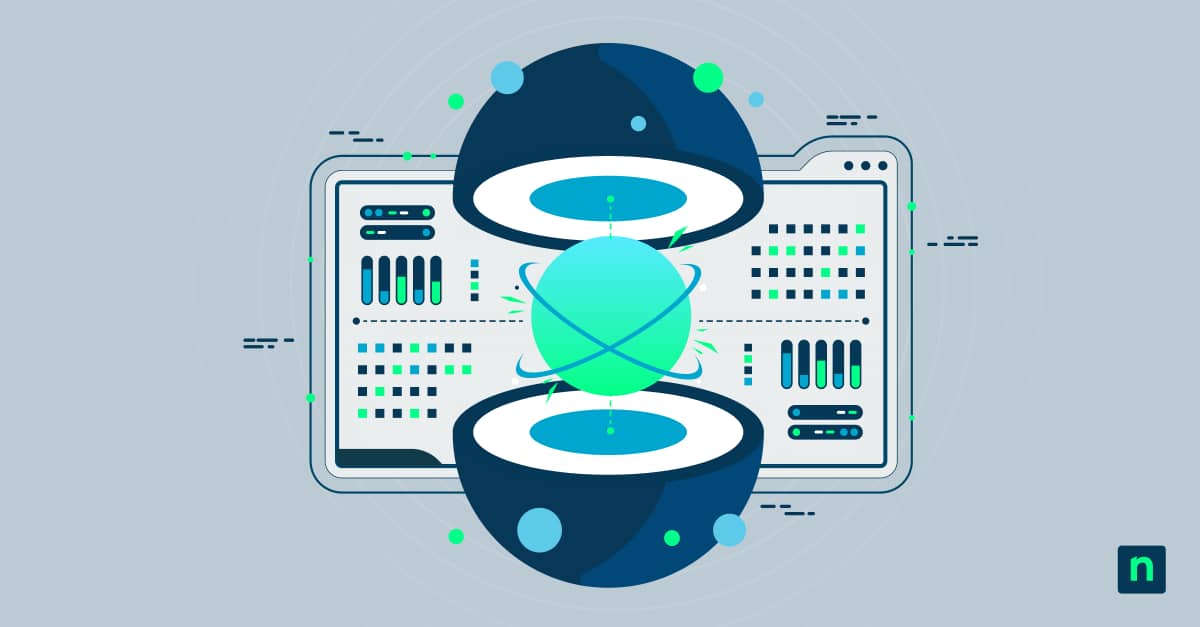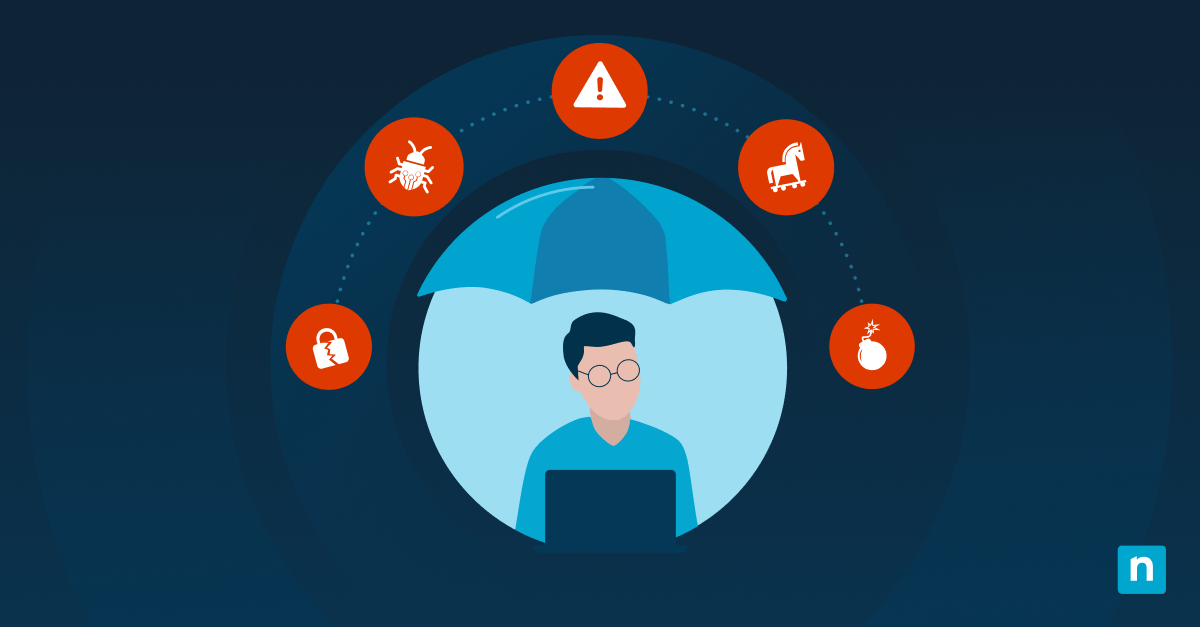Security teams increasingly deploy both network and endpoint monitoring technologies to close visibility gaps. NDR examines traffic flows between systems, while EDR focuses on activities within individual devices. These complementary approaches the differences between NDR vs EDR, addresses different attack vectors, and provides comprehensive threat detection across the entire infrastructure.
What is NDR?
Network Detection and Response (NDR) monitors network traffic to identify threats through traffic analysis and behavioral analytics. NDR solutions continuously analyze network communications, looking for anomalies that might indicate attacks like lateral movement, command-and-control communications, or data exfiltration attempts.
Unlike traditional network monitoring tools, NDR employs advanced machine learning algorithms and behavioral analysis to establish baseline network behavior and detect deviations. These solutions can identify suspicious patterns without relying solely on signatures or known threat indicators, making them effective against novel attacks. NDR platforms typically monitor both north-south traffic (between internal and external networks) and east-west traffic (between internal systems), providing comprehensive visibility across the entire network infrastructure.
What is EDR?
Endpoint Detection and Response (EDR) focuses on monitoring and protecting individual devices within your network rather than network traffic itself. EDR solutions deploy agents on endpoints — computers, servers, and mobile devices — to collect detailed information about activities occurring on these devices, enabling the detection of suspicious behaviors that might indicate a compromise.
EDR platforms go beyond traditional antivirus by providing continuous monitoring, behavioral analysis and automated response capabilities. These solutions record endpoint activities, analyze them for signs of malicious behavior and offer tools for threat hunting, incident investigation, and remediation. EDR’s ability to detect fileless malware, ransomware, and zero-day exploits makes it a critical component in defending against today’s sophisticated endpoint-based attacks.
NDR vs. EDR: Comparing capabilities
NDR and EDR monitor different aspects of your infrastructure, creating distinct visibility advantages. NDR analyzes traffic flows between devices, while EDR examines processes and behaviors within individual endpoints. These technologies use different detection methodologies and respond to threats in complementary ways.
Threat detection approaches
Each solution employs specialized techniques to identify threats based on their monitoring domain. NDR uses network behavior analytics and traffic pattern recognition, while EDR focuses on process monitoring and file integrity analysis.
| Aspect | NDR | EDR |
| Focus: | Network traffic patterns | Endpoint activities |
| Detection capability: | Lateral movement between systems | Process execution, file modifications |
| Visibility: | Network-based attacks (DDoS, scanning, exfiltration) | Malware execution, suspicious processes |
| Monitoring scope: | Traffic between systems without requiring agents | Individual devices with installed agents |
| Strength: | Network-wide visibility without endpoint agents | Deep visibility into individual endpoint behavior |
| Data source: | Network packets and flows | Endpoint telemetry and logs |
Response and remediation
When comparing NDR vs. EDR response capabilities, there are significant differences in how these technologies mitigate threats. NDR excels at network-level containment, allowing organizations to block malicious communications or isolate network segments when threats are detected. Response times for NDR solutions can be faster for network-wide threats, as they can immediately implement traffic filtering rules across the entire infrastructure.
In contrast, EDR deployment offers granular control over individual endpoints, enabling security teams to terminate processes, quarantine files or completely isolate specific devices. EDR solutions typically provide more detailed remediation options, including the ability to roll back malicious changes or restore systems to known-good states.
Integration with security stacks
Security architecture capabilities extend to security information and event management (SIEM) platforms, where NDR can contribute valuable network context to security alerts. NDR data also enhances threat hunting capabilities by providing historical network traffic information that can be correlated with other security events.
Conversely, EDR deployment integrates directly with managed endpoints, offering deep visibility into system activities but requiring agent installation and maintenance. EDR solutions often feature robust APIs that enable integration with vulnerability management systems, helping prioritize patching based on actual endpoint activity and exposure.
Network protection best practices (which to use)
Network protection best practices require the strategic implementation of both NDR and EDR technologies based on your organization’s specific needs. Rather than choosing one solution exclusively, most security experts recommend a complementary approach that leverages the strengths of each technology while compensating for their individual limitations.
Layered defense strategies
A multi-layered security approach combines NDR and EDR to create comprehensive coverage across your entire infrastructure. This strategy ensures threats are detected regardless of where they first appear or how they attempt to propagate through your environment.
Here are some defense strategies to consider:
| Defense use case | NDR, EDR, or Both? |
| Monitor north-south and east-west traffic for threats | NDR |
| Detect anomalous network behavior indicating lateral movement or data exfiltration | NDR |
| Identify compromised devices based on network communication patterns | NDR |
| Deploy agents to monitor process execution and detect suspicious activity on endpoints | EDR |
| Block malicious file execution and quarantine infected systems | EDR |
| Prioritize endpoint security on servers and sensitive devices | EDR |
| Eliminate visibility gaps with a defense-in-depth strategy | Both |
| Create unified security policies leveraging both NDR and EDR | Both |
| Regularly review and update coverage to avoid blind spots | Both |
Incident response coordination
When security incidents occur, response effectiveness depends largely on coordination between different security solutions. Instead of comparing NDR vs. EDR, establish clear workflows that leverage the strengths of both during incident handling. This coordination begins with alert correlation, where connections between network-based indicators detected by NDR and endpoint activities captured by EDR are identified.
Proactive threat hunting
Beyond reactive incident response, incorporate both NDR vs. EDR data into proactive threat hunting activities. This approach allows searching for indicators of compromise that might not have triggered automated alerts. Threat hunting teams can use NDR data to identify unusual network patterns, then leverage EDR capabilities to investigate specific endpoints involved in those communications.
Continuous security monitoring
Establish a unified monitoring strategy that incorporates telemetry from both NDR and EDR solutions into a centralized dashboard or SIEM. Configure monitoring systems to correlate events across network and endpoint data sources, enhancing threat detection accuracy and reducing false positives. Implement automated playbooks that leverage both NDR and EDR capabilities when responding to detected threats.
Real-world implementation considerations
Practical implementation factors significantly impact the success of NDR vs. EDR deployments beyond their technical capabilities. Organizations must evaluate their specific environment, resources and security objectives when planning their detection and response strategy. Security teams should assess these key considerations before making investment decisions.
Consider the following:
- Team skills matter: NDR needs network analysis expertise; EDR requires endpoint forensics knowledge.
- Infrastructure complexity counts: Distributed networks benefit more from NDR’s centralized view.
- Budget constraints? Start with the tool that covers your biggest security blind spots.
Integrating NDR and EDR for comprehensive security
To turn integration into real impact, organizations should tailor NDR and EDR deployment to their unique threat environments. Here’s how different sectors can approach it:
- Financial Services
Deploy NDR at transaction processing boundaries to flag suspicious traffic, and use EDR on customer-facing workstations and database servers. Correlating insights across both layers helps detect coordinated fraud attempts that might bypass standalone tools.
- Healthcare
Monitor medical device networks with NDR, while placing EDR on systems handling PHI. This dual-layered approach supports healthcare-specific threat detection while meeting strict privacy requirements.
- Manufacturing
Position NDR at OT/IT boundaries to catch anomalies in network flow. Where feasible, add lightweight EDR on key control systems to establish behavior baselines across both traffic and device activity—critical for spotting industrial-specific threats.
By aligning NDR and EDR deployments with sector-specific risks, organizations can close critical visibility gaps and build a defense strategy that’s both practical and precise.
No more loose ends in endpoint security
NinjaOne gives IT teams and MSPs total control over their endpoint environment — no blind spots, no weak links. From real-time monitoring and patch automation to secure remote access and app deployment, our platform ties it all together in one powerful solution.
Start your free trial today and lock down your endpoints the smart way.








